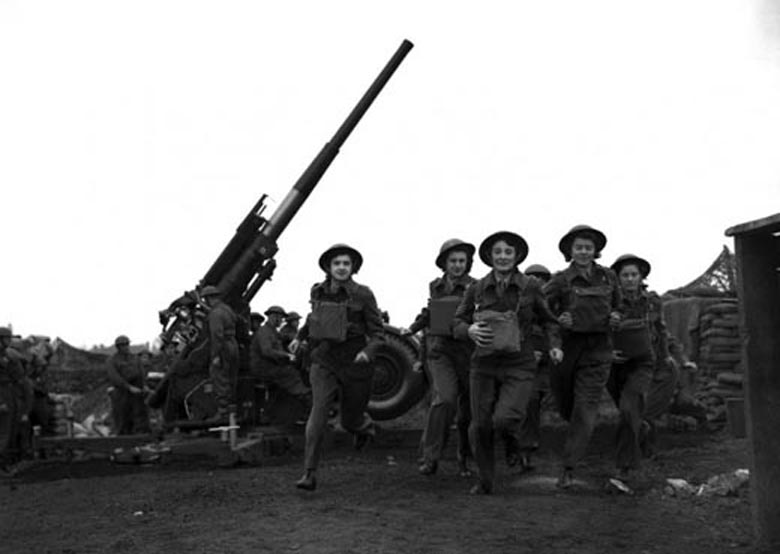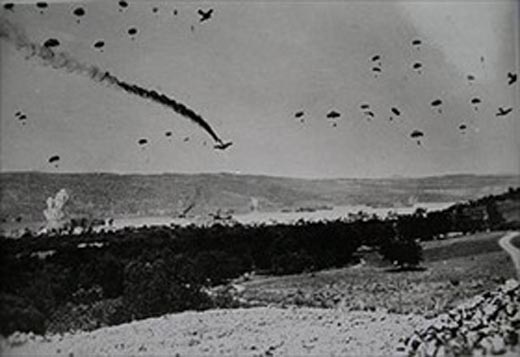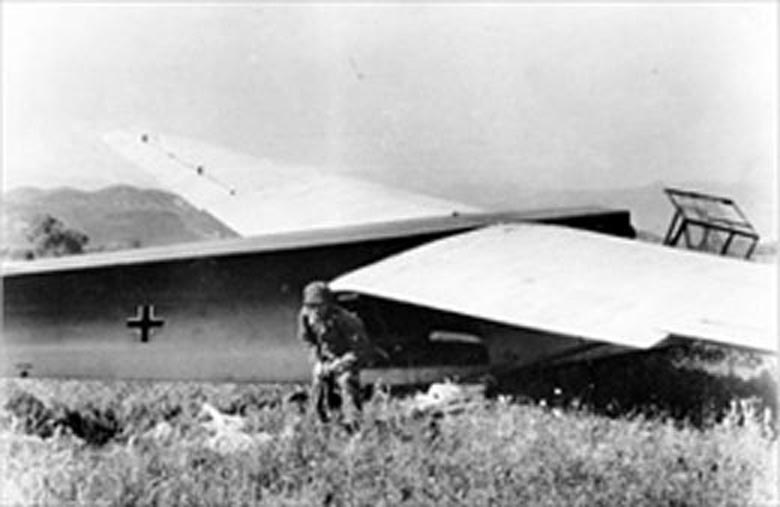Air Operations, Mediterranean
German aircraft bomb the island of Malta hitting gun and searchlight positions and causing huge fires.
[Battle of the Atlantic
- The Bismarck and Prince Eugen are reported in the Kattegat. The information reaches London with the cooperation of Intelligence officers of the Swedish navy.
- The US merchant ship Robin Moor is sunk in the Atlantic by U-69. The crew will spend 2-1/2 weeks in open boats before they are rescued. On May 21 Roosevelt describes the incident as 'an act of intimidation' to which 'we do not propose to yield'.
- In the South Atlantic the neutral Egyptian liner Zam-Zam is sunk by the German raider Atlantis. 140 US citizens are on board but none are killed.
- The Italian submarine Otaria badly damages the British steamer Starcross (4662t), from Convoy SL-73, west of Ireland. The entire crew is rescued by the Canadian destroyer St Francis. The ship is scuttled by the convoy escort.
- Several U-boats attack Convoy HX-126. U-94 sinks the British steamers Harpagus (5173t) and Norman Monarch (4718t) about 200 miles south-southeast of Cape Farewell. 58 of the crew are lost from the Hapargus, 40 are picked up by the British destroyer Burnham. The entire crew of the Norman Monarch are also picked up by the Burnham. Later U-94 sinks the Naval requisitioned Norwegian tanker John P. Pedersen (6128t) 160 miles south of Greenland with the loss of 22 of her crew. 16 survivors are picked up by the Dutch rescue ship Hontestroom.
- U-556 sinks the British tanker British Security (8470t) and the British steamer Darlington Court (4974t) south of Cape Farewell. The entire crew of 53 from the tanker are lost. 28 of the crew of the Darlington Court are lost, 12 are picked up by the Dutch rescue ship Hontestroom.
- U-111 sinks the British steamer Cockaponset (5995t) south-southeast of Cape Farewell. The entire crew of 41 are also picked up by the Hontestroom.
- U-98 sinks the British steamer Rothermere (5356t) southeast of Cape Farewell with the loss of 22 of her crew. 34 survivors are picked up by the Icelandic steamer Bruarfoss.
- U-109 sinks the British steamer Marconi (7402t) south-southeast of Cape Farewell with the loss of 22 crewmen. 56 survivors are picked up by the US Coast Guard patrol vessel General Greene.
- U-103 sinks the Egyptian steamer Radames (3575t) west of Monrovia with the loss of 1 crewman.
- U-138 sinks the British steamer Javanese Prince (8593t) 155 miles northwest of the Butt of Lewis, Outer Hebrides, with the loss of 1 of her crew. 58 survivors are picked up by the British destroyers Faulknor and Lincoln and the rescue tug Assurance.
Bay of Biscay
4 Italian submarines arrive at Bordeaux from Massawa on the Red Sea which they had left in early March.
[ Members of the Auxiliary Territorial Service (ATS) |
 |
Crete
The German attack, Operation Merkur, begins. 490 Ju-52 transports take off from several primitive strips near Athens. They tow 100 DFS gliders and land 6,000 paratroops and airborne infantry on and around Maleme airfield. There are airborne landings by forces of 7th Paratroop Div from Fliegerkorps XI. Gen Student is in command and has 5th Mtn Div in reserve. There is massive air support from Fliegerkorps VIII which has over 400 bombers and 200 fighters. Altogether the Germans employ about 23,000 troops. The garrison consists mostly of troops recently evacuated from Greece. There are strong Australian and New Zealand contingents among the 32,000 British and Empire troops and about 10,000 Greeks. All units are short of equipment and heavy weapons. Gen Freyberg is in command.
|
|
The attack begins at 5:30a.m with heavy air raids on the airfields ad Maleme and Haraklion. A second air attack occurs at 7:15a.m. The German object is to immobilize the British and in this they completely succeed. These are followed in the morning by airborne landings at Maleme and Canea.
In the afternoon there are further landings at Retimo and Heraklion. It is clear to both Allies and Germans that the battle for the island depends on control of the airfields and it is round these that the German attack concentrates. There is heavy fighting in all sectors, with the German forces suffering heavy losses. At Retimo and Heraklion the defending forces are successful in holding off the Germans and although fighting in these areas continues for several days it will not effect the outcome of the battle. The German forces near Canea are made to retreat inland but are not neutralized. At Maleme the fighting is very fierce and by the end of the day the airfield is virtually no man's land. The commander of the New Zealand battalion holding the airfield is slightly out of touch with the situation of his whole force, through no fault of his own, and decides to withdraw during the night. This comparatively minor move effectively decides the whole battle. The Germans recognize their lack of success in the other sectors and soon rush reinforcements in to the Maleme airfield.
The first convoys of German mountain troops and reinforcements leave the ports of Piraeus and Thessaloniki for Crete escorted by Italian destroyers. The first convoy suffers heavy losses, the second is forced to turn back, but others reach Milon on the evening of the 21st.
The British Mediterraniean Fleet is cruising off the island to prevent any German force arriving by sea.
[Mediterranean
- The Italian destroyer escort Curatone sinks on a mine in the Gulf of Athens.
- The Italian steamer Zeffiro (5165t) is sunk by a mine about 6 miles from Cape Bon in a new laid Italian minefield.

